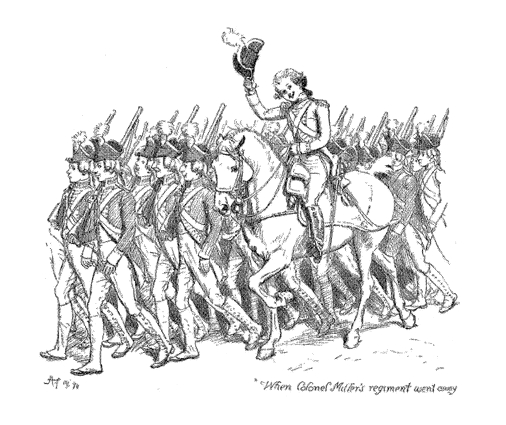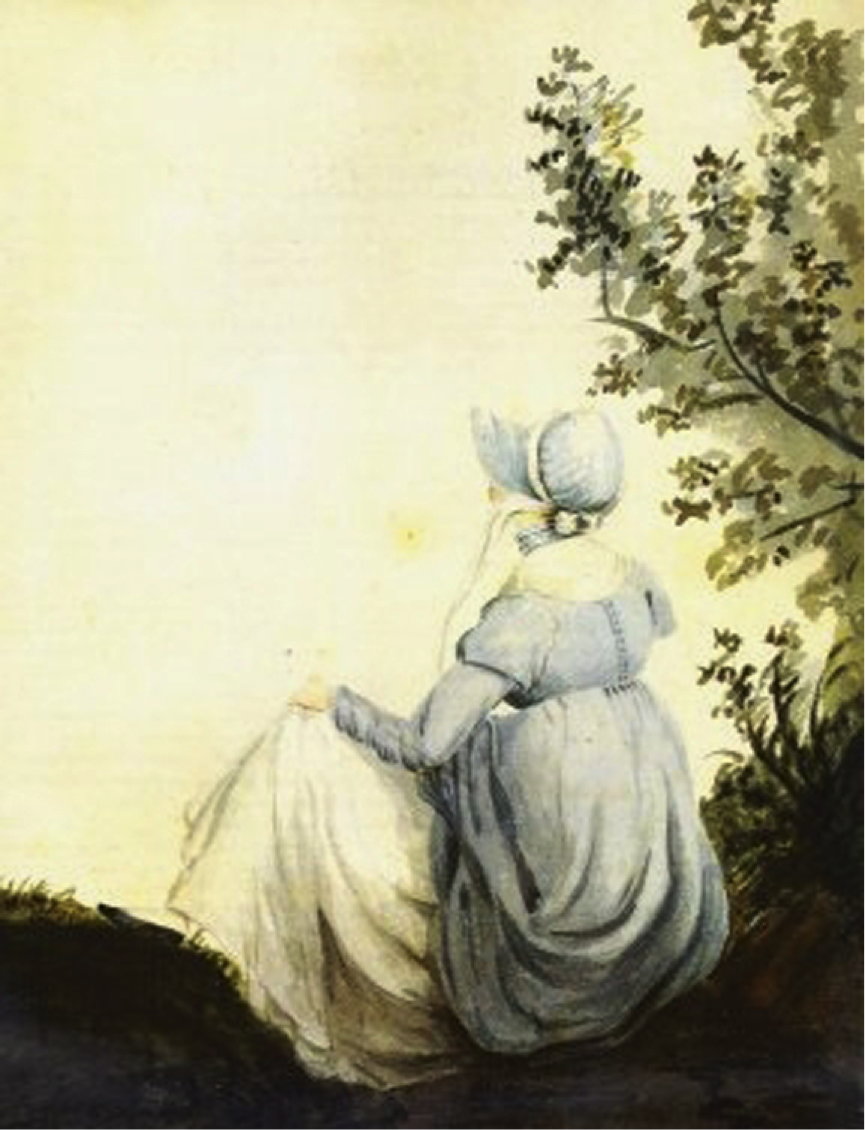“Much had been done and much had been said in the regiment since the preceding Wednesday; several of the officers had dined lately with their uncle, a private had been flogged, and it had actually been hinted that Colonel Forster was going to be married.”–Pride and Prejudice, chapter 12
We’ve been enjoying glimpses of daily life in Austen’s England from the illustrations in Hugh Thomson’s “Peacock” version of Pride and Prejudice. Today we’ll look at two different topics: the joys of dancing, and the dangers of the militia.
Dancing

One thing the officers of the militia loved to do was dance. You may have seen seen Regency dances in Jane Austen movies, and Austen groups often recreate these dances. Have you ever wondered how her characters could converse so much while they were dancing?
In country dances, two lines of couples stand opposite each other (men in one line, women in the other). They interact in groups of two or three couples, with the head couples moving down the lines, and the couples at the foot moving up. When a couple reaches the head or the foot, they stand out for a little while, then join in the dance again. That’s the time when they can talk.
This illustration shows a cotillion, which was a dance performed in groups of four couples. It reminds me of American square dances, though many details are different. The first and third couples interact, then the second and fourth couples. If you know square dancing, there are moves similar to the doh-si-doh, the grand right and left, and the allemande left. The overall style and way of stepping is different, however. As you see in the picture, there would be moments to talk to your partner (if you knew the dance well enough) while the other couples were dancing.
The Militia

During the Napoleonic Wars, England feared being invaded by France. While the regular army was off fighting, regiments of militia were stationed around the country to protect the countryside. The officers obviously enjoyed socializing with local families wherever they went. In fact, Wickham joins the militia because he wants “good society.”
The militia were known for their brightly colored uniforms, unique to each regiment, called “regimentals.” We don’t hear anything about their ability to fight. We do hear that “a private was flogged,” though no one seems bothered by this cruel punishment. However, such flogging was controversial in England at the time. Jane Austen is hinting at the moral insensitivity of the militia, and of ladies like Lydia who were enthralled by the officers.
Jane Austen also criticizes the militia in other ways. They had a reputation for immorality. Austen shows that the militia gave men like Wickham the opportunity to appear to be gentlemen in their fancy uniforms, even though they were corrupt underneath. The officers came to a town like Meryton as strangers, with no vested interest in the area, and would eventually leave. They might leave debts and damaged women behind, as Wickham did. The militia looked impressive, but as Austen shows, some of them were not to be trusted.
However, many of the militia were doing their jobs well. Jane Austen’s brother Henry was in the militia for a time. Henry was brought up as the son of a devout clergyman, and later became a clergyman and an inspiring preacher himself. So, I would like to assume that Henry Austen was one of the good, faithful men of the militia! (For more on the militia in Austen’s England, see “Sighing for a Soldier: Jane Austen and Military Pride and Prejudice” by Tim Fulford.)
The militia were supposed to protect Austen’s England from French invasion. However, sometimes they posed a danger to the people they were trying to protect. The Bible calls people like Wickham “wolves in sheep’s clothing”; they appear innocent but are not. Recently there have been protests against some police officers who mistreat those they are supposed to protect. Those who do that tarnish the reputation of the majority of policemen, who are faithfully doing their jobs. In any sphere of life, we need to discern who the “wolves in sheep’s clothing” are, and not assume that all in a given profession are the same.
Earlier posts
Note: Hugh Thomson’s illustrations are in the public domain.



2 thoughts on “Dancing, and The Militia, in Jane Austen’s England”